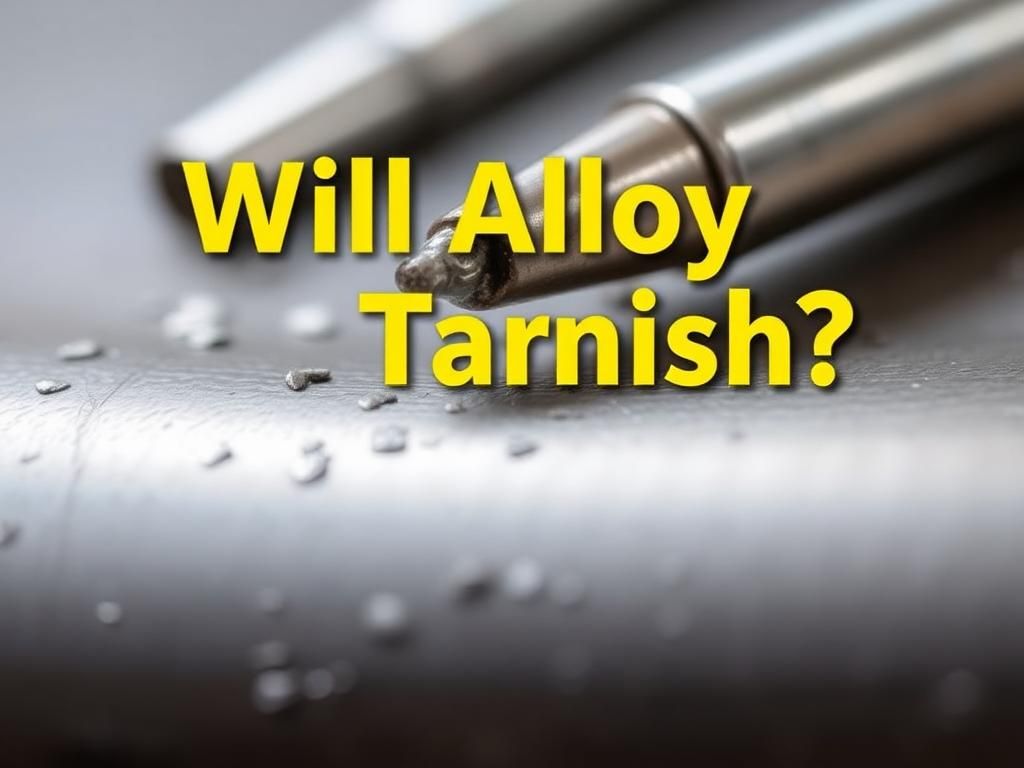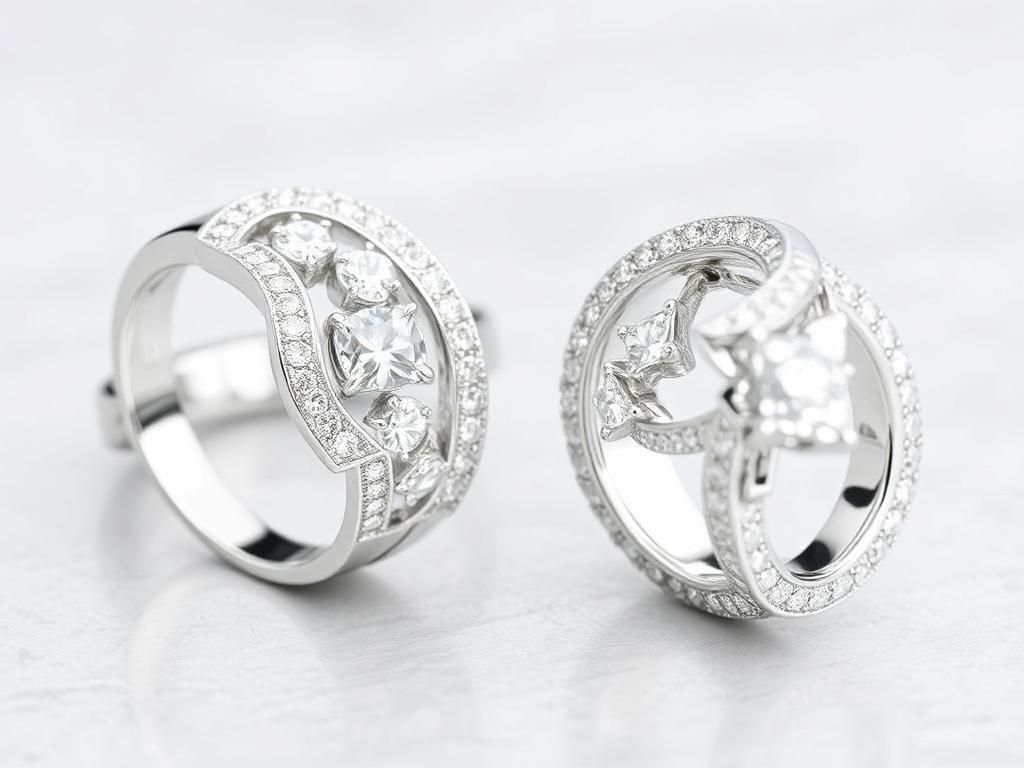Alloys, a fascinating blend of metals, are prevalent in various applications, particularly in jewelry making. Unlike pure metals, alloys are composed of two or more metals, granting them unique properties that make them suitable for different purposes. However, the question often arises: would alloy tarnish? Understanding alloy tarnishing is crucial for preserving the beauty and longevity of your metallic items. This article explores what tarnishing is, which alloys are prone to it, the factors that contribute to it, prevention techniques, and proper care methods.
What is Tarnishing?
Definition of Tarnishing
Tarnishing refers to the formation of a film on the surface of metals, leading to discoloration and ultimately degradation. This process is primarily a chemical reaction between the metal and sulfur compounds in the air, moisture, or other environmental factors.
Common Signs of Tarnishing
Recognizing tarnishing early can help mitigate its impact. The most common signs include:
– Color change: Alloys may develop a dull, grayish hue or dark spots.
– Surface dullness: A previously shiny surface appears cloudy or muted.
– Spotting or discoloration: Irregular patches of discoloration may emerge.
Types of Alloys Prone to Tarnishing
While many alloys can tarnish, some are particularly susceptible due to their composition.
Silver Alloys
– Sterling silver: Comprising 92.5% silver, sterling silver is well-known for its luster, but it tarnishes quickly due to the remaining copper content.
– Argentium silver: A modern alternative that is less prone to tarnishing due to a higher percentage of pure silver and germanium.
Copper Alloys
– Brass: A combination of copper and zinc, brass tarnishes with exposure to moisture and air.
– Bronze: An alloy of copper and tin, bronze may develop a green patina over time.
Nickel Alloys
– Nickel silver (German silver): This copper-based alloy may tarnish and can cause allergic reactions in some individuals, adding complexity to the question of would alloy tarnish.
Factors Contributing to Tarnishing of Alloys
The tarnishing process is influenced by numerous factors.
Environmental Factors
– Humidity and moisture: Increased humidity accelerates tarnish formation.
– Pollution and chemicals in the air: Industrial pollutants contain sulfur and chlorine, which exacerbate tarnishing.
Lifestyle Factors
– Skin chemistry and pH levels: Individual differences in skin oil and acidity can affect how quickly alloys tarnish upon skin contact.
– Contact with sweat, lotions, and perfumes: Everyday products can cause reactions that lead to tarnishing.
Storage Conditions
– Impact of improper storage: Failing to store alloys properly can expedite tarnishing.
– Recommendations for safe storage: Store items in a cool, dry place away from sunlight.
Preventing Alloy Tarnishing
Preventive measures can significantly extend the life of your alloy items.
Proper Care Techniques
Regular maintenance includes:
– Regular cleaning methods: Clean your jewels frequently to remove tarnish-causing grime.
– Appropriate cleaning agents: Use gentle cleansers, avoiding harsh chemicals.
Protective Coatings
– Use of anti-tarnish sprays and wipes: These can create a barrier against tarnish.
– Applying clear nail polish: Suitable for specific alloys to prevent tarnishing.
Best Practices for Storage
– Use of airtight containers: Reduces exposure to elements that cause tarnishing.
– Anti-tarnish cloth or bags: These specially designed products can protect your alloys when stored.
Cleaning Tarnished Alloys
If tarnishing has occurred, here are some effective cleaning methods.
DIY Cleaning Methods
– Homemade cleaning solutions: Solutions like vinegar and baking soda can work wonders without damaging the metal.
– Soft cloths vs. abrasive materials: Always opt for soft cloths to avoid scratching the surface.
Professional Cleaning Options
Knowing when to seek professional help is essential:
– When to seek professional help: For intricate items or severe tarnishing.
– Overview of professional cleaning services: Many jewelers offer dedicated polishing services.
Long-term Care for Alloys
Understanding the need for regular maintenance is key to preventing tarnishing.
Routine Maintenance
– Importance of regular inspections: Check your items periodically for signs of tarnish.
– Seasonal care guidelines: Increase inspections during high humidity months.
Understanding Alloy Composition
– Knowing your alloy’s specific properties: Helps you tailor care and cleaning practices for optimal results.
– Researching and choosing non-tarnishing options: Explore recent developments in tarnish-resistant alloys.
Conclusion
In conclusion, understanding whether would alloy tarnish is vital for anyone who owns metallic items. Regular maintenance, proper storage, and effective cleaning practices can help reduce tarnishing and prolong the life of your treasures. By applying the tips outlined in this article, you can ensure your alloys remain beautiful for years to come.
Additional Resources
References for Further Reading
– “The Jewelers’ Handbook: Jewelry Care 101” – A guide on maintaining various types of jewelry.
– Websites such as [Ganoksin](https://www.ganoksin.com) provide valuable resources for metal enthusiasts.
Product Recommendations
Explore products like anti-tarnish storage solutions and jewelry cleaning kits from trusted brands like Hagerty and Sunshine.
FAQs
1. What metals are known for tarnishing?
Common metals that tarnish include sterling silver, brass, copper, and nickel alloys like German silver.
2. Is tarnishing reversible?
Yes, tarnishing can often be reversed through cleaning methods like polishing or using specially formulated cleaning solutions.
3. Does storing jewelry in a humid environment cause more tarnishing?
Absolutely! Humidity promotes tarnish formation, so it’s essential to store jewelry in a dry place.
4. Can I prevent tarnishing without chemicals?
Yes! Regular cleaning with mild soap and water, along with proper storage, can effectively minimize tarnishing.
5. How often should I clean my jewelry to prevent tarnish?
It depends on usage, but generally, cleaning every month can help maintain its shine and prevent tarnish buildup.
6. Are there specific cloths designed to prevent tarnishing?
Yes, anti-tarnish cloths and bags are available that can protect your jewelry when stored.
7. What signs indicate my silver jewelry is tarnished?
Look for discoloration, dullness, or spots on the surface of your silver pieces.
8. Can I use toothpaste to clean tarnished jewelry?
While some people do use toothpaste, it’s advisable to use products specifically designed for jewelry to avoid damage.
9. What is the best way to store my jewelry?
Store your jewelry in airtight containers or anti-tarnish bags, away from moisture and direct light.
10. Should I worry about tarnishing on jewelry worn daily?
Yes, regular wear can accelerate tarnishing, so it’s essential to clean and maintain daily-worn jewelry frequently.


